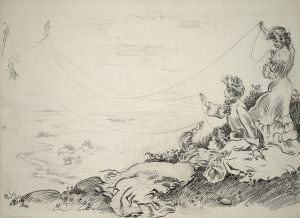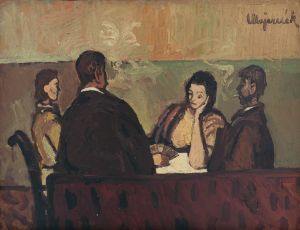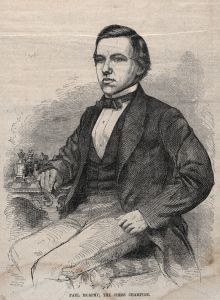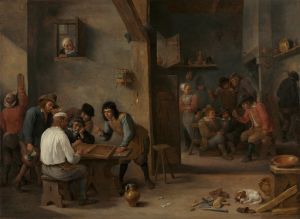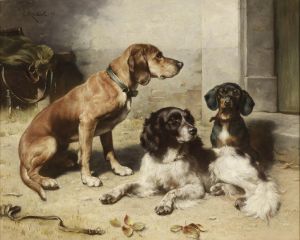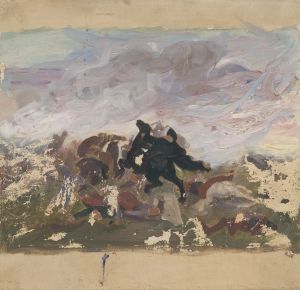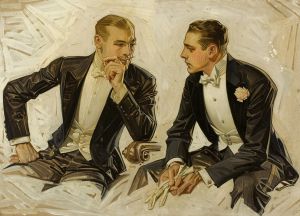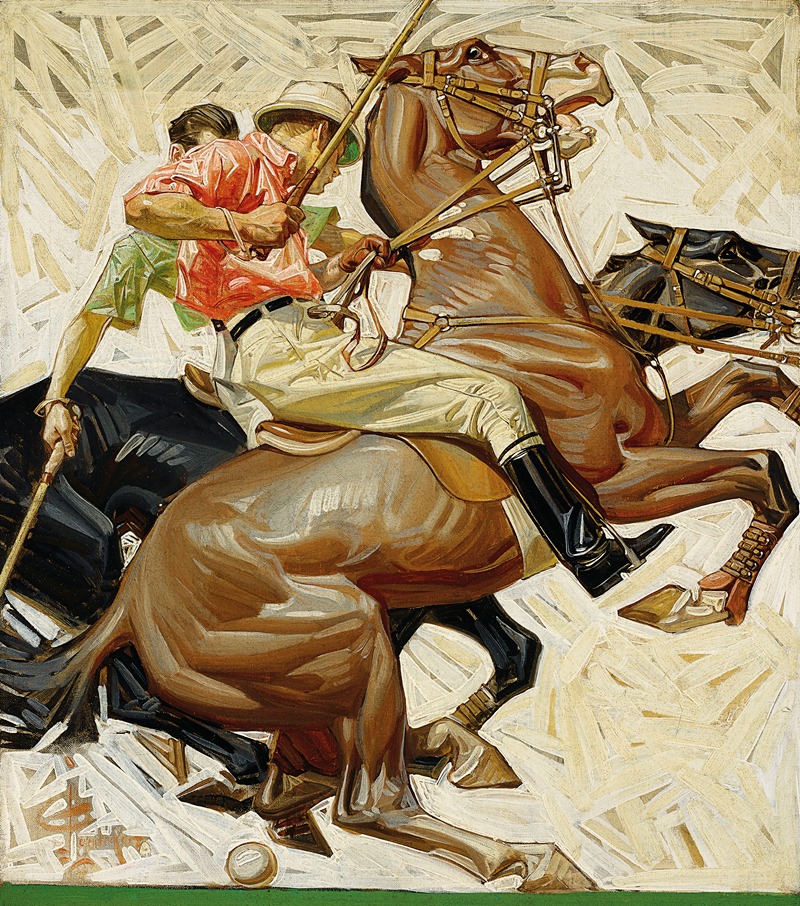
Polo Players on Horseback
A hand-painted replica of Joseph Christian Leyendecker’s masterpiece Polo Players on Horseback, meticulously crafted by professional artists to capture the true essence of the original. Each piece is created with museum-quality canvas and rare mineral pigments, carefully painted by experienced artists with delicate brushstrokes and rich, layered colors to perfectly recreate the texture of the original artwork. Unlike machine-printed reproductions, this hand-painted version brings the painting to life, infused with the artist’s emotions and skill in every stroke. Whether for personal collection or home decoration, it instantly elevates the artistic atmosphere of any space.
Joseph Christian Leyendecker was a prominent American illustrator, known for his distinct style and significant contributions to early 20th-century American visual culture. Among his many works, "Polo Players on Horseback" stands out as an exemplary piece that captures the dynamism and elegance of the sport of polo. Although specific details about this particular painting are limited, Leyendecker's broader body of work provides context for understanding its significance.
Leyendecker was born in 1874 in Montabaur, Germany, and immigrated with his family to the United States in 1882. He studied at the Chicago Art Institute and later at the Académie Julian in Paris, where he honed his skills in illustration and painting. Leyendecker's career took off in the early 1900s, and he became one of the most sought-after illustrators of his time, particularly known for his work with "The Saturday Evening Post."
"Polo Players on Horseback" reflects Leyendecker's mastery in capturing movement and his keen eye for detail. Polo, a sport that combines elements of teamwork, strategy, and equestrian skill, was a popular subject in the early 20th century, symbolizing sophistication and the leisure pursuits of the elite. Leyendecker's depiction likely emphasizes the grace and athleticism of both the players and their horses, rendered with his characteristic precision and flair.
Leyendecker's style is marked by his use of bold lines, dramatic lighting, and a rich color palette, all of which contribute to the dynamic composition of his works. His illustrations often featured idealized figures, which became a hallmark of his approach, influencing the visual language of advertising and magazine covers during his era. While specific details about the composition and dimensions of "Polo Players on Horseback" are not widely documented, it can be inferred that the painting embodies these stylistic elements.
Throughout his career, Leyendecker created over 400 magazine covers, with his work appearing prominently in publications such as "The Saturday Evening Post," "Collier's," and "American Weekly." His illustrations not only captured the spirit of the times but also helped shape the visual identity of early 20th-century America. Leyendecker's influence extended beyond magazine covers to advertising, where his images were used to promote a wide range of products, from clothing to consumer goods.
Despite the lack of extensive documentation on "Polo Players on Horseback," Leyendecker's legacy as an illustrator is well-established. His ability to convey narrative and emotion through his art made him a pivotal figure in American illustration. Leyendecker's work continues to be celebrated for its artistic merit and its impact on the development of visual culture in the United States.
In summary, while specific information about "Polo Players on Horseback" is limited, Joseph Christian Leyendecker's reputation as a master illustrator provides a framework for appreciating the painting's likely qualities. His contributions to the field of illustration remain influential, and his works are studied for their technical skill and cultural significance.






